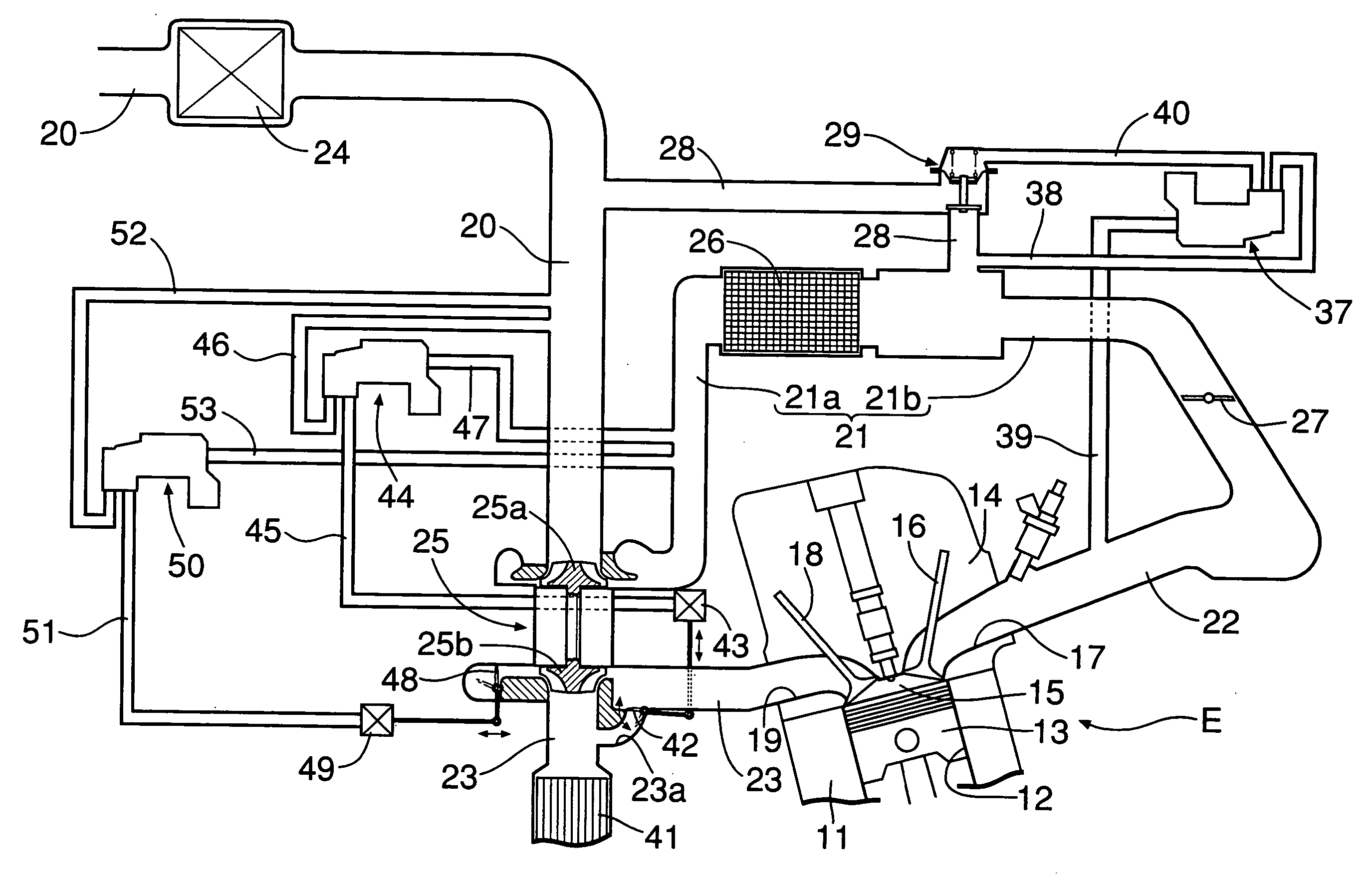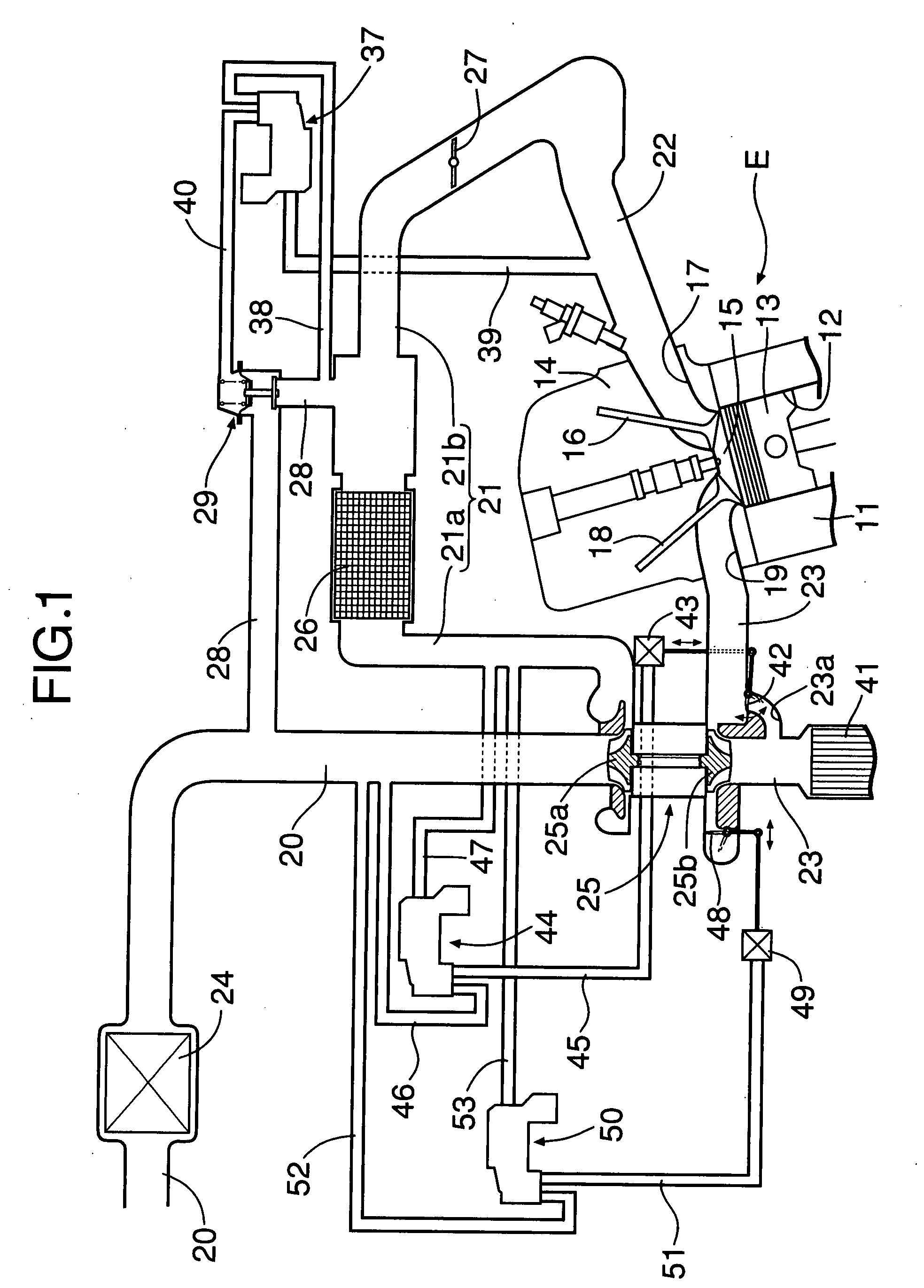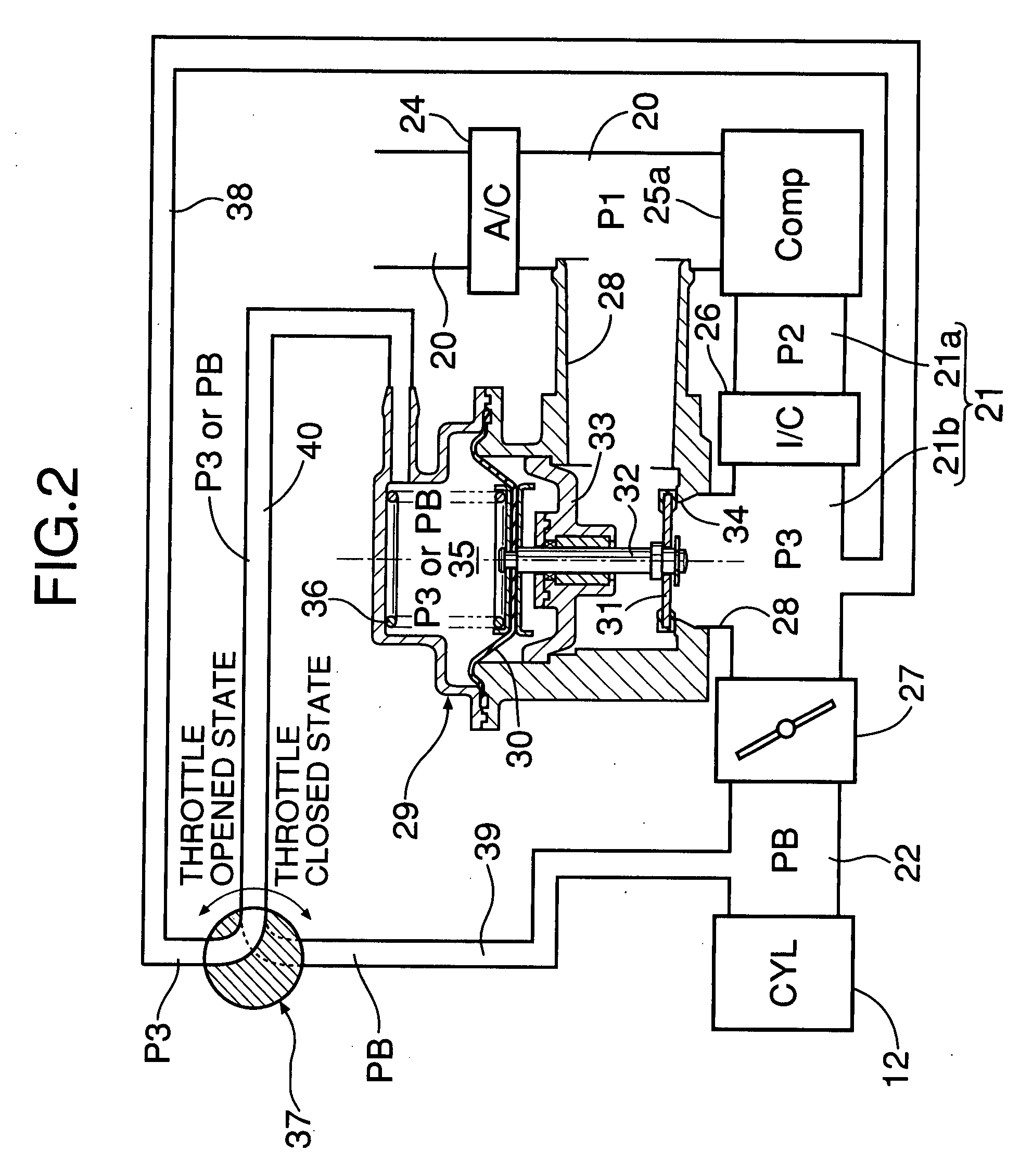Failure detecting device for supercharging-pressure control means in supercharging device of engine
a supercharging device and failure detection technology, applied in the direction of electric control, combustion engines, machines/engines, etc., to achieve the effect of accurate detection of failures of supercharging pressure control and increase the frequency of failure detection
- Summary
- Abstract
- Description
- Claims
- Application Information
AI Technical Summary
Benefits of technology
Problems solved by technology
Method used
Image
Examples
Embodiment Construction
[0037] As shown in FIGS. 1 and 2, an engine E includes a piston 13 that slidably fits in a cylinder 12 provided in a cylinder block 11. An intake port 17 and an exhaust port 19 communicate with a combustion chamber 15 formed between an upper surface of the piston 13 and a lower surface of a cylinder head 14. The intake port 17 is opened and closed by an intake valve 16. The exhaust port 19 is opened and closed by an exhaust valve 18. From an upstream side to a downstream side in a flowing direction of an intake air, a first intake passage 20 is connected to a second intake passage 21, which is connected to a third intake passage 22, which is connected to the intake port 17. An exhaust passage 23 is connected to the exhaust port 19.
[0038] An air cleaner 24 is arranged in the first intake passage 20. A compressor 25a of a turbocharger 25 is arranged between the first intake passage 20 and the second intake passage 21. An intercooler 26 is arranged between an upstream section 21a and ...
PUM
 Login to View More
Login to View More Abstract
Description
Claims
Application Information
 Login to View More
Login to View More - R&D
- Intellectual Property
- Life Sciences
- Materials
- Tech Scout
- Unparalleled Data Quality
- Higher Quality Content
- 60% Fewer Hallucinations
Browse by: Latest US Patents, China's latest patents, Technical Efficacy Thesaurus, Application Domain, Technology Topic, Popular Technical Reports.
© 2025 PatSnap. All rights reserved.Legal|Privacy policy|Modern Slavery Act Transparency Statement|Sitemap|About US| Contact US: help@patsnap.com



